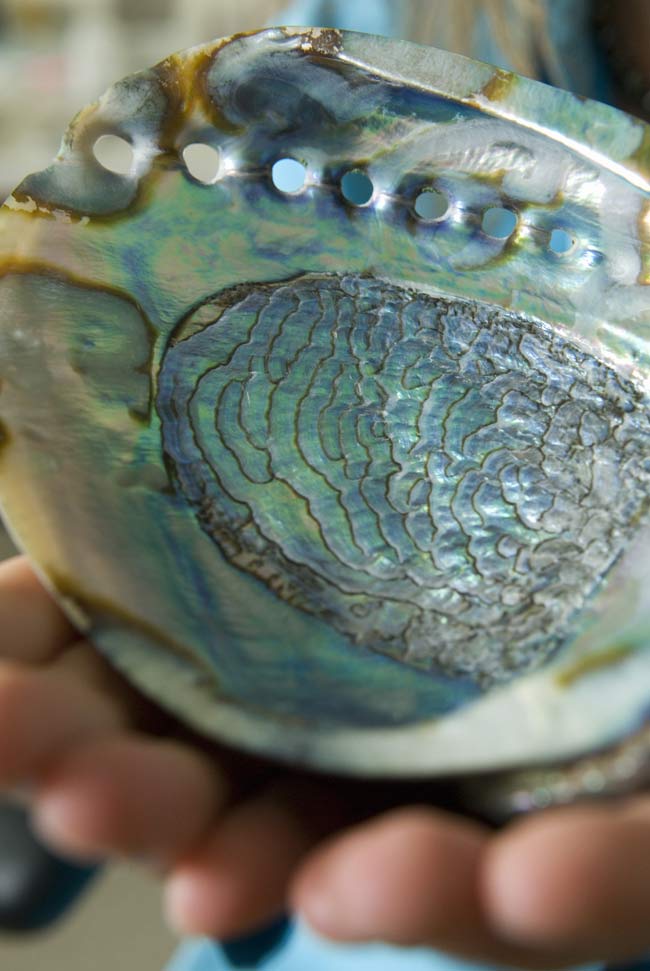Secret to Abalone Shell Strength Revealed

Mother-of-pearl looks dainty hanging from a necklace, but this iridescent innard of abalone shells is so tough it can withstand the weight of a truck.
Also called nacre, the material has long puzzled scientists because it is 3,000 times more break-resistant than the mineral that comprises its building blocks, aragonite. Recently, researchers have started to examine the intricacies of the hardy structure in hopes of learning how to replicate it in durable man-made materials.
"We have a lot to learn from nature," said University of Wisconsin-Madison physicist Pupa Gilbert, who co-authored a nacre study published in the June 29 issue of the journal Physical Review Letters. "We don't know how to synthesize materials that are better than the sum of their parts."
Similar to our teeth and bones , nacre is composed of both organic materials produced by an organism and inorganic minerals in a mollusk's diet or collected from the environment. However, nacre construction is unusually efficient. The mollusk incorporates elements from its environment into highly organized structures, of which only 5 percent of the material is organic, previous research shows.
A study in 2004 revealed the brick-like nature of nacre's construction.
To peer more deeply into mother-of-pearl's inner architecture, Gilbert and colleagues used a light source called synchrotron radiation.
The polarized light showed that the nacre was not constructed as uniformly as previously thought. One previous study had hinted at this conclusion, finding chunks of material mixed into the otherwise layered construction.
Sign up for the Live Science daily newsletter now
Get the world’s most fascinating discoveries delivered straight to your inbox.
Close up, the shell resembles a brick wall, with a twist. Organic mortar lies between clumps of mineral-crystal bricks aligned in irregular columns. The columns of crystals interlock like zippers, but each column faces a different direction than its neighbor.
Gilbert and her team predict that this irregular, interlocking design stands behind nacre's brute force.
"It's strength is very likely due to structure," Gilbert told LiveScience.
With further research, Gilbert says scientists could someday reproduce this natural structural design to create, for example, cars that absorb all of the energy at a point of impact but do not fracture.
- Amazing Animal Abilities
- 10 Amazing Things You Didn't Know About Animals
- The Strongest Natural Fiber: Spider Silk









